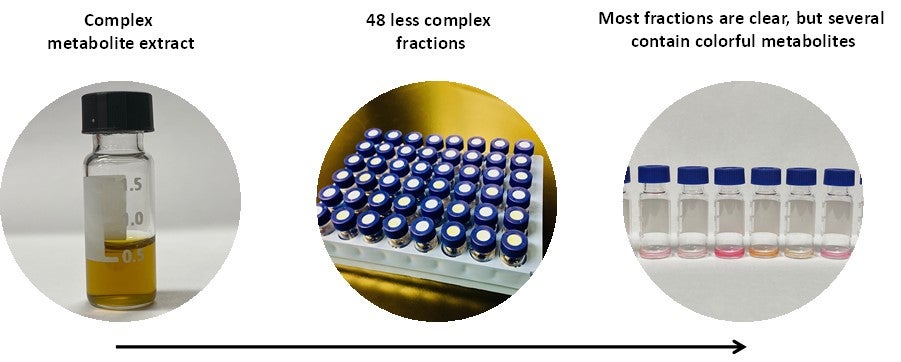Workflow and Example
The metabolome is vast. Some estimate the number of unique metabolites (including secondary metabolites) to be greater than 1,000,000, most of which are still unknown. Fractionation is a strategy to reduce the complexity of a metabolite extract. Fractions can then be used as treatments in various systems (e.g. cell culture, plants). Fractions that exhibit activity (e.g. induce cell differentiation or increase pest resistance) can then be characterized using a metabolomics approach to identify the active metabolite.
We can generate up to 96 fractions from a single metabolite extract in less than 4 hrs. The fractions are then dried under nitrogen, and re-suspended in a solvent compatible with treatment experiments.
The experiment below demonstrates the utility of a fractionation approach. Metabolites were extracted from several different brightly colored flowers on the UCR campus. The resulting extract is dark yellow. This complex metabolite extract was fractionated into 48 less complex fractions by UPLC. After concentrating each fraction, most were clear, but several contained colorful metabolites. Those with the color of interest can be characterized by LC-MS.

